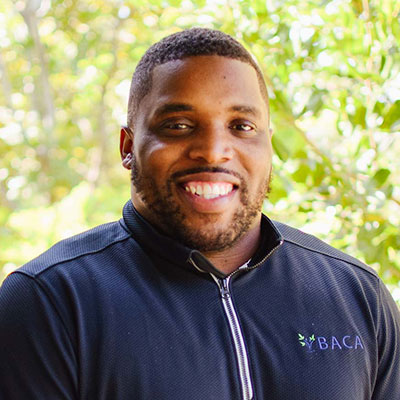Telehealth is not new, but during the pandemic, the use of telehealth – including video chat – increased significantly, and now – almost five years later – we finally have a peer-reviewed study on the effectiveness of telehealth in reducing or preventing suicide among high-risk patients.
If you read the news or use social media, you’ve probably seen countless posts, memes, and articles about self-care and mental health. And you probably know about the general trends in the following figures, if not the precise numbers:
- 2000-2018: suicide rates increased by 37%
- 2018-2020: suicide rates decreased by 5%
- 2020-2022: suicide rates increased by 7.6%
In the U.S., we can trace our current focus on mental health issues – in the news and in society-at-large – to the dramatic increase in suicidality among all age groups shown in the data above. Of particular concern were the increases in suicidality among youth and adolescents: suicide became a leading cause of death for people 10-24 in the 2010s. When the COVID-19 pandemic arrived, many adults feared the numbers would increase dramatically again, which they did. That’s one reason the Surgeon General of the United States (SOGA) issued this special advisory on youth mental health:
Protecting Youth Mental Health: The U.S. Surgeon General’s Advisory (SGA) 2021
And that’s why we published this article about that advisory:
Improving Adolescent Mental Health: A National Challenge
In 2021, data showed that suicide was the second leading cause of death for people ages 10-24.
Which makes the publication of this study of critical importance:
Telehealth Brief Cognitive Behavioral Therapy for Suicide Prevention? A Randomized Clinical Trial
It’s the first study of its kind to evaluate the effectiveness of a suicide prevention intervention delivered via telehealth since the widespread proliferation of telehealth in mental health treatment ushered in by the COVID-19 pandemic.
About the Study: Telehealth and Suicide Prevention
The research team organized their efforts around this question:
Can brief cognitive behavioral therapy (BCBT) for suicide prevention reduce suicide attempts and suicidal ideation when delivered remotely to high-risk adults via video telehealth?
To conduct the study, researchers recruited a total of 98 participants from an outpatient psychiatry/behavioral heath clinic in the Midwest. Patient details:
- Female: 66.7%
- Average age: 32
- Received treatment for suicidal ideation in the past week
- Received treatment for suicidal behavior in the past month
All patients participated in an intake interview, during which they met their therapist, reviewed guidelines for telehealth, and received a full diagnostic evaluation with the standard assessment tool, the Diagnostic Interview for Anxiety, Mood, and Obsessive-Compulsive Disorder and Related Neuropsychiatric Disorders (DIAMOND). After the initial intake interview, researchers divided patients into two groups. Each patient participated in a 90-minute, intervention-specific interview, followed by 12 weekly one-on-one sessions of 60 minutes each.
One group received therapy with brief cognitive behavioral therapy (BCBT), and the other with present-centered therapy (PCT). Researchers measured the following outcomes via follow-up assessments via at 3, 6, 9, and 12 months after the 12-week intervention period:
- Suicide attempts
- Severity of suicidal ideation
Here’s a quick overview of the two interventions assessed in this study.
Brief cognitive behavioral therapy (BCBT):
This is an evidence-based suicide-focused therapeutic modality that helps patients develop effective emotion regulation and cognitive reappraisal skills. It occurs in three phases:
First Phase, five sessions:
- Assessment of patient-specific factors related to suicidality
- Therapist provides tools for cognitive-behavioral approach to suicidal behavior
- Patient and therapist collaborate to develop crisis response plan
- Therapist teaches emotion regulation and stress management skills, such as mindfulness and relaxation
Second Phase, five sessions:
- Therapist engages patent with cognitive strategies that help the patient recognize and resolve thoughts, patterns of thought, and beliefs that increase suicide risk.
Third Phase, two sessions:
- Patients engage in a guided imagery rehearsal relapse prevention task
- First, they imagine the internal and external circumstances associated with a past suicide crisis
- Next, they visualize themselves applying the cognitive strategies and skills learned in phase 2 in order to resolve the crisis.
- Patient and therapist repeat the guided imagery exercise until both are satisfied the patient can successfully apply their new skills in a real-world situation
Present-centered therapy (PCT):
This is an evidence-based, goal-centered therapeutic modality designed to help patients recognize and resolve maladaptive responses to stressful circumstances and situations, both internal and external. This approach is less structured than BCBT, but follows this general pattern:
- Initial sessions involve psychoeducation about suicidality, including suicidal thoughts and suicidal behaviors.
- In this study, patients developed an emergency crisis/safety plan during the first session
- The next series of sessions prioritizes subjects the patient chooses
- Therapist advises patient to keep a journal of thoughts and emotions related to suicidality
- During subsequent sessions, the therapist provides support in the form of:
- Active listening
- Emotional validation
- Positive counseling
- Problem-solving ideas to improve patient coping skills
While both approaches previously showed effectiveness for depression, posttraumatic stress disorder, and suicidal ideation, there are significant differences in approach. Whereas BCBT includes structured and specific training for emotion management and reappraising suicidal thoughts, PCT did not contain these components. That’s why researchers used it to compare against BCBT, it’s an effective therapeutic technique, but researchers hypothesized the skills training in BCBT might make a difference.
Before we share their results, let’s take a moment to review the current rates of suicidality in the U.S.
Suicidality in the U.S.: The Latest Facts and Figures
We collected this data from the Centers for Disease Control (CDC) and the 2023 National Survey on Drug Use and Health (2023 NSDUH). The NSDUH is an important publication because of its sample size. With information from over 70,000 people, we can form population-level generalizations that allow providers and policymakers to plan effective intervention strategies for demographic groups at highest risk.
First, we’ll share the most recent statistics on suicidality among adults.
Suicidal Ideation, Suicide Plan, Suicide Attempts Among Adults
Serious thoughts of suicide:
- Total: 5.0% (12.8 million)
- 18-25: 12.2% (4.1 million)
- 26-49: 3.9% (6.1 million)
- 50+: 2.1% (2.6 million)
Made a suicide plan:
- Total: 1.4% (3.7 million)
- 18-25: 4.2% (1.4 million)
- 26-49: 1.6% (1.7 million)
- 50+: 0.5% (600,000)
Attempted suicide:
- Total: 0.6% (1.5 million)
- 18-25: 2.0% (675,000)
- 26-49: 0.6% (584,000)
- 50+: 0.2% (199,000)
This data is not hard to interpret. Among adults, people age 18-25 show highest risk of suicidality, followed by people age 26-49.
Next, we’ll share the most recent statistics on suicidality among adolescents.
Suicidal Ideation, Suicide Plan, Suicide Attempts Among Adolescents 12-17
Serious thoughts of suicide:
- Yes: 12.3% (3.2 million)
- No: 73.1%
- Not sure: 8% (2.1 million)
- Declined to answer: 6.6% (1.7 million)
Made a suicide plan:
- Yes: 5.6% (1.5 million)
- No: 85.3%
- Not sure: 3.5% (908,000)
- Declined to answer: 5.5% (1.4 million)
Attempted Suicide:
- Yes: 3.3% (856,000)
- No: 89.9%
- Not sure: 2.1% (533,000)
- Declined to answer: 4.7% (1.2 million)
This data is also relatively straightforward: more than three million adolescents considered suicide and almost a million attempted suicide. This is an area of concern for all parents, providers, and policymakers: our youth and young adults are in crisis and need our help.
Now we’re ready to review the results of this new study – the first one on the impact of telehealth on suicidality – to learn which approach is more effective in reducing suicidality, brief cognitive behavioral therapy (BCBT) or present-centered therapy (PCT).
Results: Which Telehealth Intervention Was More Effective for Suicide Prevention?
The first outcome the research team examined was suicide attempts. Here’s what they found:
Outcome 1: Suicide Attempts
BCBT group:
- 11 participants made 36 suicide attempts
- 25 aborted
- 6 interrupted
- 5 actual
- Total: 0.70 attempts per participant
PCT group:
- 12 participants made 56 suicide attempts
- 30 aborted
- 19 interrupted
- 7 actual
- Total: 1.40 attempts per participant
Patients in the PCT group showed twice as many suicide attempts per person. Statistical analysis shows that patients who received BCBT had 41% reduced risk for suicide attempts compared to patients who received PCT.
The second outcome – severity of suicidal ideation – is easy to report. Severity of suicidal ideation decreased significantly for both the BCBT group and the PCT group, and the rates of decrease were similar for both groups.
We’ll discuss these results below.
Our Takeaways: Telehealth Effective for Suicide Reduction and Prevention
Although this is the first peer-reviewed study on the effectiveness of telehealth/video-delivered psychotherapeutic interventions on suicidality, we already knew – or had a solid idea – that interventions via telephone can work well.
The data from the National Suicide Crisis Line (988) make that clear. Since launch in 2022:
- 12.9 million contacts
- 8.7 million calls received
- 2.3 million texts received
- 1.8 million chats engaged
Here’s how that looked by year:
- 2022: 3.7 million contacts
- 2023: 5.2 million contacts
- 2024: 5.8 million contacts
That information shows us something we need to know. People in crisis will call a hotline and accept support over the phone. Where this study helps is the next step. Yes, people will accept help over the phone. They’ll even initiate contact.
But – over the phone – what works best?
Here’s how the study authors answer this critical question:
“In this RCT of adult psychiatric outpatients at elevated risk for suicide, BCBT delivered via telehealth significantly reduced suicide attempts compared to PCT. Significant reductions in suicidal ideation severity were observed in both groups and did not differ between BCBT and PCT.”
This study shows that while both interventions reduced the severity of suicidal ideation, BCBT demonstrated superior effectiveness for reducing suicide attempts. This teaches us that while supportive counseling, journaling, validating emotions, and active listening helps, something else helps more: practical skills to tolerate stress, coupled with active, guided imagery exercises that prepare at-risk patients for crisis moments.
When patients learn practical skills, and can practice them with a skilled, experienced, and intuitive mental health professional before they experience a suicide crisis, their suicidality decreases. That’s in the data, and that’s something we understand: at BACA, we’re at the leading edge of virtual support:
Learn About Our Virtual Intensive Outpatient Program (IOP) for Young Adults
Suicide and Mental Health Crisis Hotlines and Helplines
The following resources are free, and available to everyone:
- 988 Suicide & Crisis Lifeline.
- The Trevor Project Phone (24/7/365) for LGBTQIA+ teens: 1-866-488-7386
- The Trevor Project Text (24/7/365): Text START to 678678
- The Trevor Project Chat: CLICK HERE
- The Crisis Text Line (24/7/365): Text CONNECT to 741741
- The Youth Yellow Pages TEEN LINE (6pm-10pm PT) 310-855-4673
- The Youth Yellow Pages TEXT: Text TEEN to 839863


